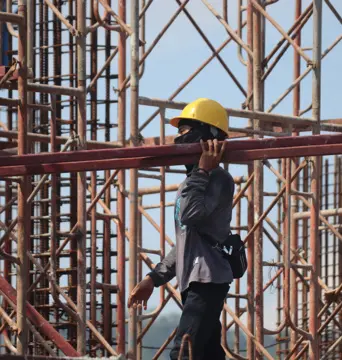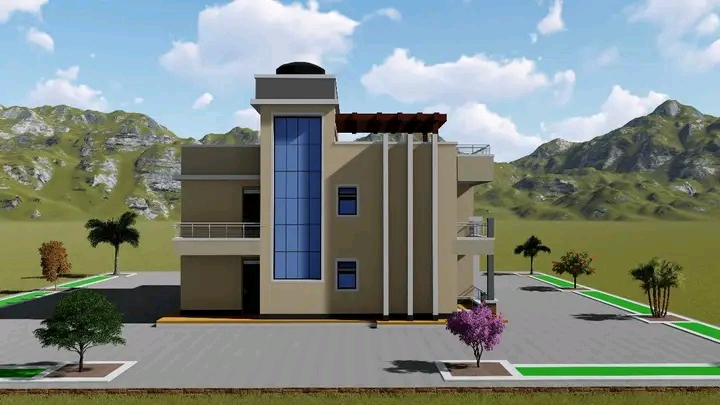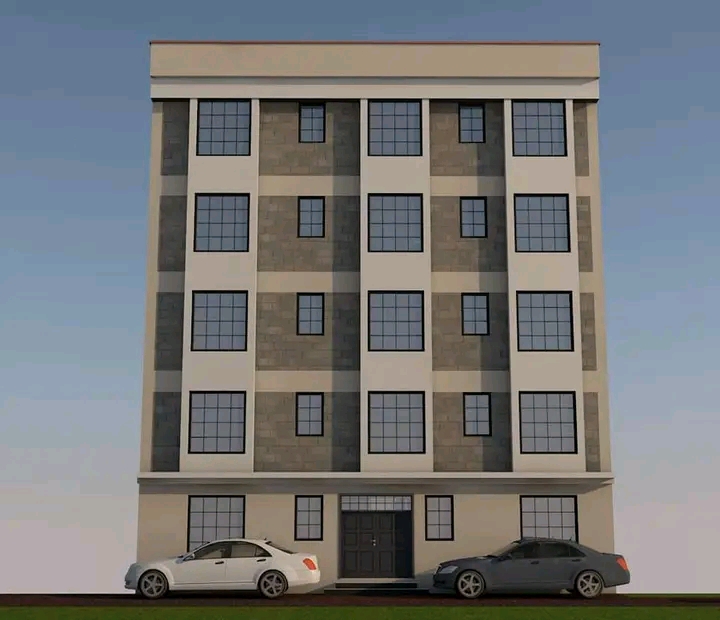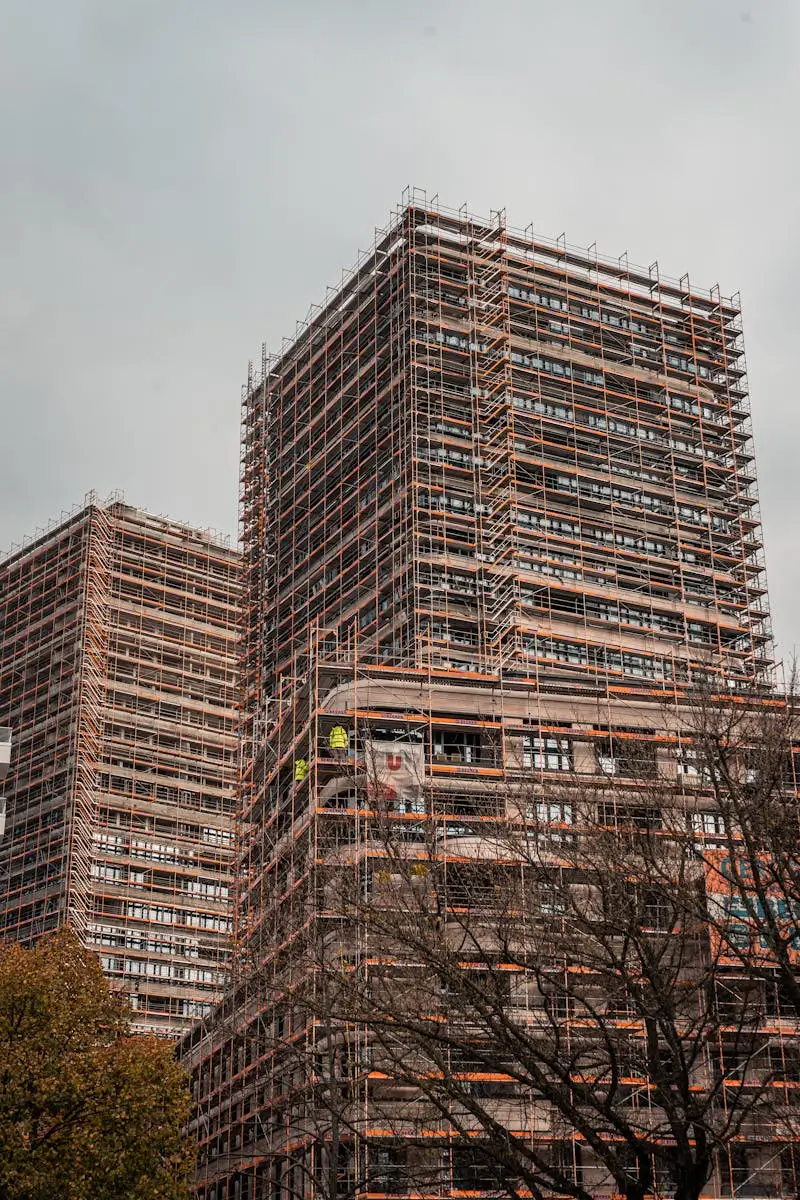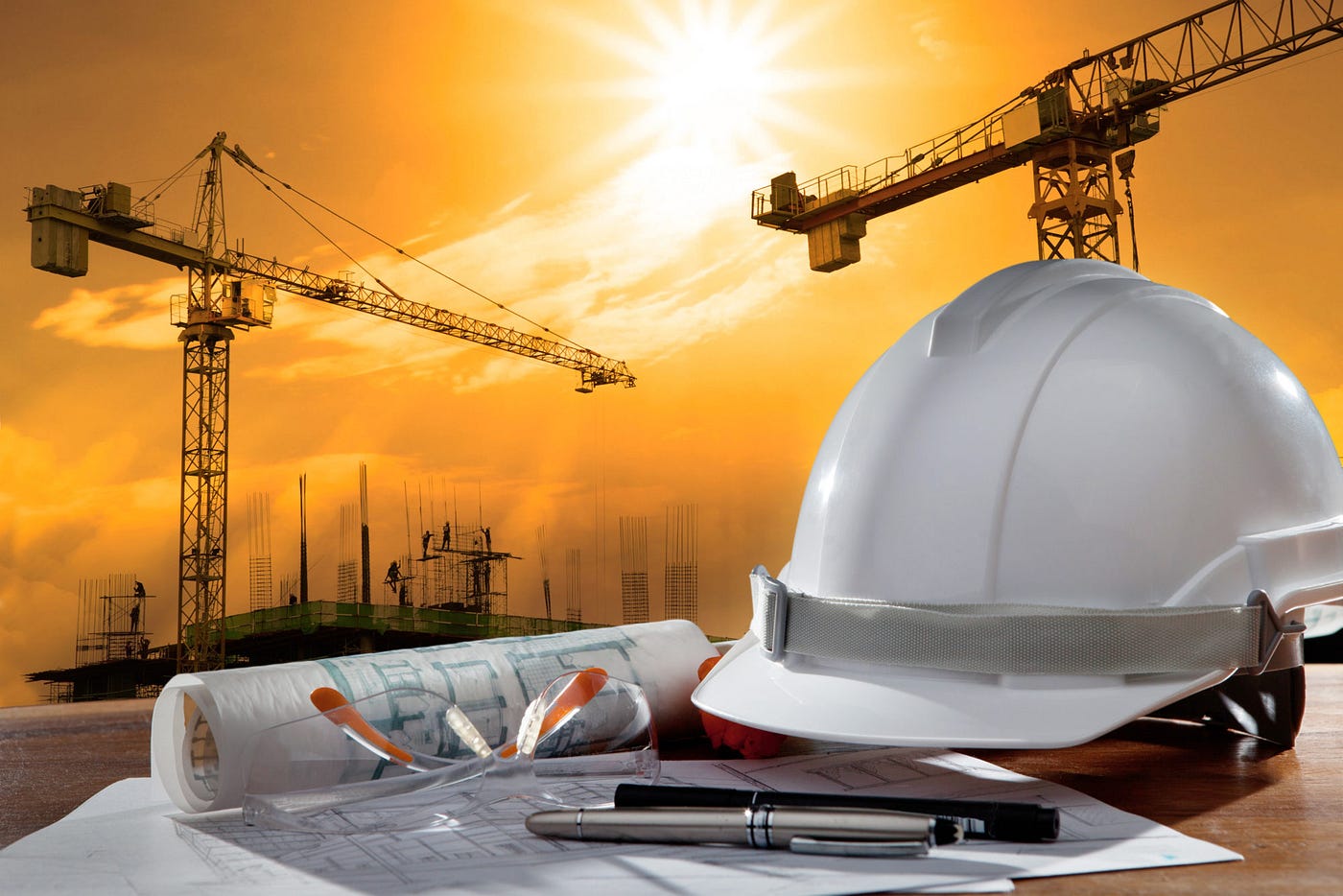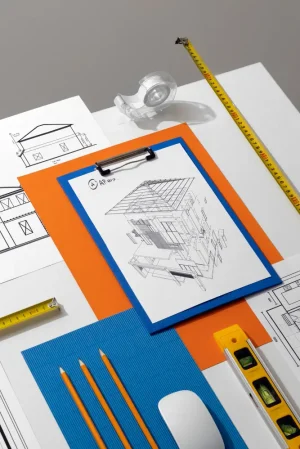Ensure compliance and protect your workers with our complete guide to construction site safety in Kenya. Learn mandatory regulations, buy the right PPE, access HSE services, and download checklists to keep your site safe.
Why Construction Site Safety Matters in Kenya
Key Statistics & Common Hazards
Construction site safety in Kenya is crucial because accidents can happen at any time without warning. According to recent reports, falls, electrical shocks, and machinery accidents are among the most frequent construction hazards in Kenya. Workers often face risks due to inadequate training, poor equipment maintenance, or a lack of personal protective equipment. Implementing proper safety measures reduces the number of injuries and fatalities significantly. Employers who invest in safety programs create a safer work environment and improve worker morale.
Common hazards include:
- Falls from heights
- Electrocution or electrical accidents
- Machinery and equipment injuries
- Exposure to dust and harmful chemicals
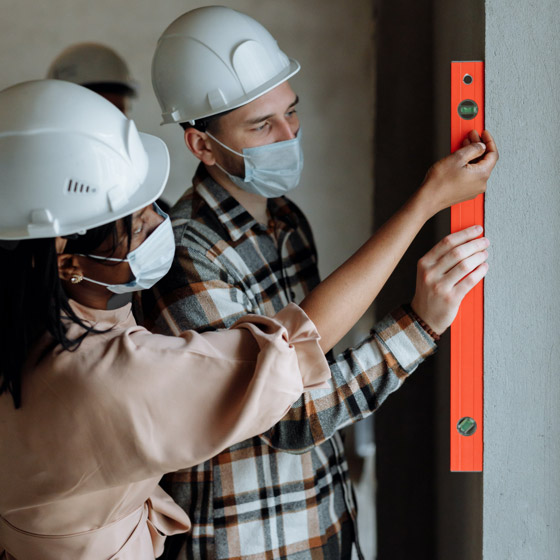
Legal Implications: OSHA 2007, WIBA, National OSH Policy
Kenya’s OSHA 2007, WIBA, and the National Occupational Safety and Health (OSH) Policy set the legal framework for workplace safety. Compliance ensures that employers meet minimum safety standards and protect workers’ rights. OSHA 2007 outlines requirements for proper equipment, supervision, and reporting, while WIBA covers compensation in case of workplace injuries. The National OSH Policy provides guidelines for creating a safety culture within organizationorganisationsance can lead to fines, legal disputes, or even project shutdowns. Understanding these regulations is key to running a safe and legally compliant construction site.
Cost of Non-Compliance: Penalties, Insurance, and Project Delays
Ignoring construction site safety can be expensive. Non-compliance can result in heavy fines, insurance premium hikes, and increased claims under WIBA. Accidents often cause project delays, affecting deadlines and client satisfaction. Workplace incidents may also damage a company’s reputation and result in higher recruitment and training costs. Investing in safety measures is far cheaper than covering accident-related expenses. Companies that prioritise both savings and improved operational efficiency.
Related post: Project Management in Construction Kenya – Best Practices
Mandatory Legal & Compliance Requirements
Registration & Permits (NEMA, County Approvals)
All construction projects in Kenya must comply with regulatory approvals before work begins. Registration with local authorities and NEMA ensures environmental and workplace safety standards are met. County approvals often include inspections for site layout, waste management, and hazard prevention. Having proper permits protects developers from legal penalties and potential project shutdowns. It also reassures clients and investors that the project adheres to safety standards. Proper registration is the first step toward a compliant and safe construction site.
Required On-Site Documentation and Safety Registers
Keeping accurate records on-site is part of OSHA Kenya requirements. Employers must maintain safety registers, incident logs, and training records for every worker. These documents track safety compliance, identify gaps, and provide evidence during inspections or audits. Safety registers should be updated regularly and accessible to all supervisors. Clear documentation also aids in reporting accidents and supporting insurance or WIBA claims. Organised documents contribute to a culture of accountability and continuous improvement.
Related post: Structural Engineering Services in Kenya — Costs & Benefits
Safety Officer Roles and Recommended Ratios
A dedicated safety officer ensures ongoing compliance with OSHA Kenya requirements and oversees daily safety operations. They conduct regular inspections, train workers, and enforce safety protocols. For larger sites, the ratio of safety officers to workers should align with regulatory recommendations to cover all shifts and work areas. Having a visible safety officer encourages workers to follow rules and report hazards promptly. Proper supervision reduces accidents and improves emergency response times. Investing in skilled safety personnel is a cost-effective way to maintain a secure construction site.
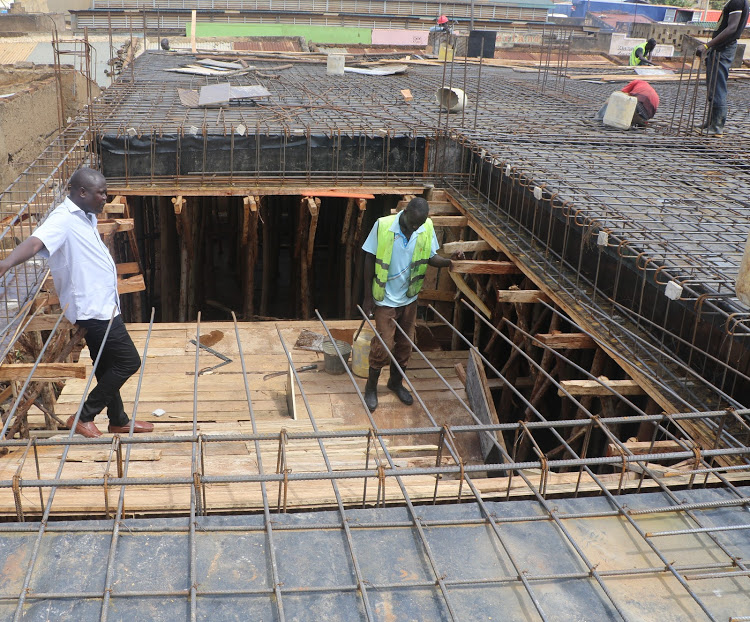
Common Construction Site Hazards and How to Mitigate Them
Fall Hazards, Electrical, Machinery, and Dust Exposure
Falls, electrical hazards, machinery accidents, and dust exposure are among the top construction hazards in Kenya. Workers at height are at risk if guardrails or harnesses are not properly installed. Electrical hazards occur due to exposed wiring or faulty equipment. Machinery accidents often result from improper operation or a lack of training. Dust and chemical exposure can cause respiratory problems over time. Mitigation measures include proper PPE, safety signage, regular maintenance, and worker training programs.
Confined Spaces and Chemical Hazards
Confined spaces, such as tanks, trenches, and silos, pose serious risks due to low oxygen, toxic gases, or difficult exits. Chemical hazards include exposure to solvents, paints, and cement dust. Without proper ventilation, monitoring, and protective equipment, accidents can be fatal. Companies must provide worker training, entry permits, and emergency procedures. Regular inspections ensure hazards are identified before work begins. Awareness and proactive planning significantly reduce accidents in these high-risk areas.
Prevention Strategies and Training Programs
Preventing accidents requires a combination of planning, equipment, and worker education. Regular safety training and toolbox talks help employees recognise hazards and follow protocols. Implementing fall protection systems, electrical safety measures, and dust control methods is essential. Incident reporting and near-miss tracking improve future safety strategies. Supervisors should enforce procedures consistently and encourage workers to report unsafe conditions. Continuous training fosters a safety culture, reducing accidents and improving compliance.
Related post: Civil Engineering vs Contractors – Key Differences
Personal Protective Equipment (PPE) Guide
Mandatory PPE for Workers: Helmets, Gloves, Boots, Eye Protection
Personal protective equipment (PPE) is essential for maintaining construction site safety in Kenya. Helmets protect workers from head injuries caused by falling objects, while gloves prevent hand injuries and chemical exposure. Safety boots reduce the risk of foot injuries from sharp materials or heavy equipment. Eye protection, such as goggles or face shields, safeguards against dust, sparks, and flying debris. Wearing mandatory PPE consistently lowers accident rates and ensures compliance with OSHA Kenya requirements. Employers should also train workers on proper PPE usage and maintenance to maximise safety.
Specialised for Specific Trades (Electrical, Welding, Roofing)
Some trades require specialised skills beyond the basics. Electrical workers need insulated gloves and rubber-soled boots to prevent electrocution. Welders require flame-resistant jackets, welding helmets, and gloves to protect against sparks and heat. Roofing crews should use harnesses, fall-arrest systems, and slip-resistant boots. Providing trade-specific PPE ensures that workers are protected from the unique hazards of their roles. Regular inspections of specialised areas also maintain effectiveness and compliance. Investing in appropriate gear enhances worker confidence and reduces accidents on-site.
Where to Buy Certified PPE in Kenya (Nairobi, Mombasa, Kisumu)
Kenya has several trusted suppliers for certified construction safety gear. Buying from reputable vendors guarantees quality and compliance with local safety standards. Some suppliers offer PPE packages tailored for construction projects, including helmets, gloves, boots, and eye protection. Prices vary depending on quality and quantity, so comparing quotes is recommended. Employers can also purchase online or visit local stores in Nairobi, Mombasa, or Kisumu for convenience. Prioritising PPE reduces risks and ensures workers remain safe throughout the project.
Safety Signage, First Aid & Site Infrastructure
Recommended Signage and Hazard Markings
Safety signage guides workers and visitors on a construction site. Clear hazard markings, warning signs, and directional indicators prevent accidents and improve compliance. Signs should be placed at entrances, near machinery, and in high-risk zones. Using standardised symbols and bright colours ensures visibility and understanding for everyone. Signage is also a legal requirement under OSHA Kenya regulations. Regular inspection ensures that all signs remain visible and undamaged throughout the project.
First-Aid Kits, Fire Safety, and Emergency Equipment
Every construction site must have accessible first-aid kits and emergency equipment. Kits should include bandages, disinfectants, splints, and burn treatments. Fire extinguishers and fire blankets must be positioned strategically and maintained regularly. Workers should be trained on basic first aid and emergency response procedures. Proper emergency preparedness reduces the severity of injuries and ensures faster medical attention. Implementing these measures demonstrates a commitment to worker safety and regulatory compliance.
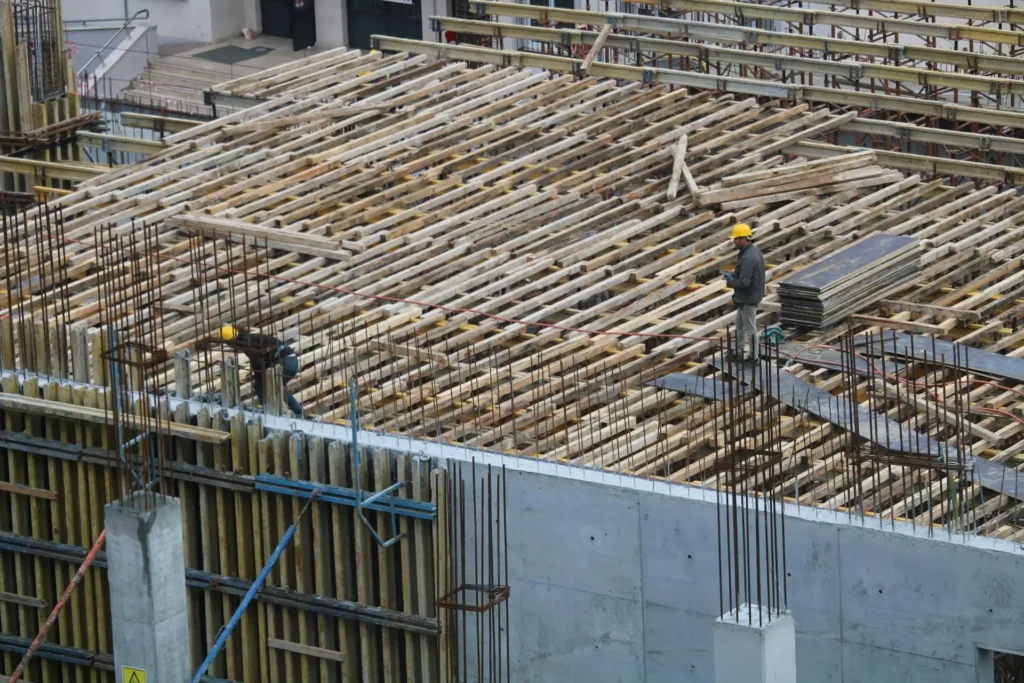
Dust, Debris, and Netting Controls
Dust and debris are common hazards that can affect respiratory health and site cleanliness. Controlling dust involves water suppression, dust masks, and barriers. Nets and scaffolding guards prevent falling debris from endangering workers or bystanders. Regular site cleaning and proper waste disposal also reduce tripping hazards and equipment damage. These controls not only improve safety but also enhance overall productivity on site. Prioritising structure safeguards workers and maintains compliance with OSHA Kenya standards.
Related post: How to Build Affordable Houses in Kenya Without Compromising Quality
HSE Consultancy & Training Services
Evaluating HSE Consultancies: Certification, Experience, Training Scope
Hiring a professional HSE consultancy ensures that construction site safety in Kenya is properly managed. Evaluate consultants based on certifications, years of experience, and the scope of services offered. Effective consultancies provide risk assessments, safety audits, and compliance support. Choosing the right consultant reduces legal risks and improves workplace safety culture. They can also tailor recommendations to the size and type of construction project. Investing in expert guidance is an efficient way to implement OSHA Kenya standards effectively.
On-Site Safety Induction & Toolbox Talks
Safety induction and toolbox talks are crucial for educating workers on site hazards. Inductions cover site rules, emergency procedures, and proper use of PPE. Toolbox talks are short, frequent sessions addressing specific hazards or incidents observed on site. Regular training ensures that all workers understand their responsibilities and can respond safely. This proactive approach reduces accidents and encourages a culture of safety. Supervisors should document sessions to demonstrate compliance and monitor effectiveness.
Cost and Packages for Safety Audits and Training
HSE consultancies offer various packages depending on site size, project complexity, and training requirements. Costs may include audits, risk assessments, training sessions, and ongoing support. Comparing quotes ensures that employers receive value for money while meeting compliance standards. Investing in structured safety training lowers the risk of accidents and insurance claims. Comprehensive packages often include follow-up visits and performance monitoring. Selecting the right package ensures consistent, high-quality safety management throughout the project.
Procurement & Implementation: Step-by-Step
How to Request Quotes from Suppliers
Requesting quotes from suppliers is the first step to implementing construction site safety in Kenya. Clearly outline your project requirements, including the type of PPE, safety signage, and training services needed. Ask suppliers for product certifications, warranty details, and delivery timelines. Comparing multiple quotes ensures you get the best value while meeting compliance standards. Communication should be documented to avoid misunderstandings and ensure accountability. Properly managed quotes streamline procurement and reduce delays during project execution.
Related post: How to Choose the Right House Plan Online in Kenya
Sample Procurement Checklist & Budget Line Items
A procurement checklist helps track all safety-related purchases and approvals. Include items such as PPE packages, first-aid kits, safety signage, fall protection systems, and HSE training. Allocate a construction safety budget for each category to avoid overspending and ensure full compliance. The checklist should also track supplier contacts, quotation dates, and delivery timelines. Regularly updating the checklist ensures all items are purchased and implemented on time. Using a structured checklist improves transparency and efficiency in procurement.
Tracking Implementation and Compliance Progress
Tracking implementation ensures that safety measures are properly applied on-site. Supervisors should regularly check PPE usage, hazard signage placement, and safety infrastructure. Compliance audits and progress reports help identify gaps early. Digital tools or simple spreadsheets can record inspections, incident reports, and corrective actions. Consistent monitoring promotes accountability and reinforces safety culture among workers. Proper tracking also supports legal compliance and prepares the site for external audits.
Related post: Best house plans in Kenya and house designs in Kenya
Measuring Safety Performance & ROI
KPIs: Incident Rate, Near-Misses, Audit Score
Measuring construction site safety in Kenya requires clear key performance indicators (KPIs). Track incident rates, near-misses, and audit scores to assess safety performance. These metrics highlight problem areas and measure improvements over time. Supervisors can use KPIs to prioritize training or equipment upgrades. Maintaining transparent records ensures management and workers understand safety expectations. Consistent monitoring helps create a culture of accountability and proactive hazard management.
How Proper Safety Reduces Insurance/WIBA Exposure
Investing in safety measures directly impacts insurance premiums and WIBA claims. Fewer workplace accidents reduce claim costs and prevent legal disputes. Insurance companies may offer discounts for compliant sites or documented safety programs. Implementing safety protocols also minimizes project delays caused by accidents. Demonstrating proper safety management improves trust with stakeholders and investors. Ultimately, safety investment protects both workers and company finances.
Case Studies: Cost-Benefit of Safety Improvements
Real-world examples show the value of investing in construction safety. For instance, installing fall protection systems and conducting regular toolbox talks can reduce accidents by up to 40%. Reduced incidents lower insurance claims and avoid costly project delays. Investing in PPE and training may seem expensive initially but pays off through fewer injuries and smoother operations. Documented case studies inspire confidence and encourage adherence to safety protocols. Reviewing these examples helps decision-makers justify their construction safety budget.
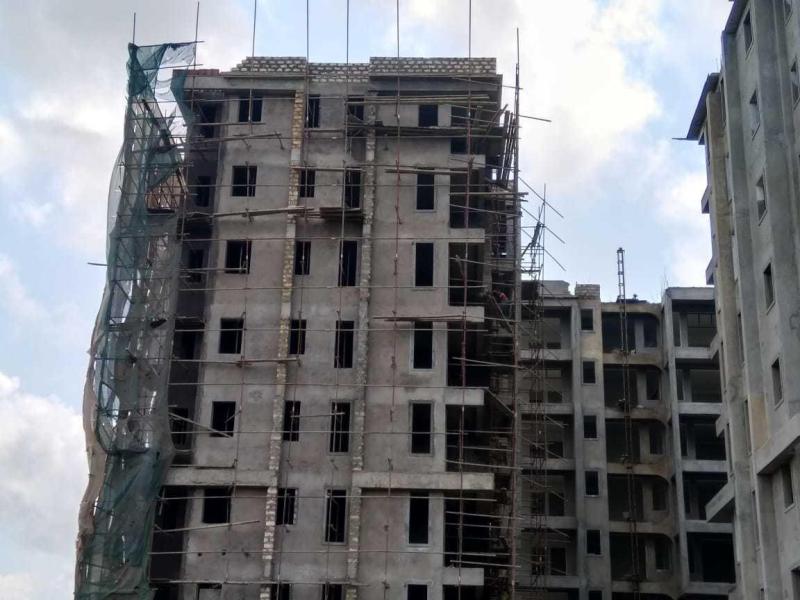
Top Safety Products & Services in Kenya
Vetted PPE Suppliers and Safety Vendors
Choosing reliable suppliers ensures that construction site safety in Kenya is maintained effectively. Vetted PPE suppliers provide certified helmets, gloves, boots, and eye protection. Safety vendors often offer bundled solutions for signage, first-aid kits, and training packages. Working with trusted suppliers reduces the risk of faulty equipment or non-compliant products. Maintaining strong supplier relationships also helps with timely deliveries and support. Evaluating supplier history and customer reviews is key to selecting the best partners.
Recommended Safety Tools and Training Packages
Safety tools and training packages complement physical protective equipment. These may include fire extinguishers, harnesses, scaffolding guards, and digital monitoring tools. Training packages cover hazard identification, proper PPE use, and emergency response. Comprehensive solutions ensure that workers are fully prepared for site risks. Combining tools and training enhances both compliance and productivity. Employers should consider integrated packages to simplify procurement and management.
How to Evaluate Vendors (Certifications, Warranty, After-Sales Support)
Vendor evaluation is critical to maintaining ongoing safety standards. Check certifications to ensure products meet OSHA Kenya and local standards. Review warranty terms and after-sales support for maintenance and replacements. Ensure that vendors provide training or guidance on proper equipment usage. Comparing multiple suppliers reduces cost without compromising quality. A well-evaluated vendor network strengthens overall safety compliance and minimizes operational risks.
Final Checklist & Downloadables
1-Page Compliance Checklist (Downloadable Lead Magnet)
A 1-page compliance checklist helps ensure construction site safety in Kenya is maintained consistently. It summarizes all mandatory PPE, signage, first-aid kits, HSE documentation, and legal requirements. Workers and supervisors can quickly verify that safety measures are in place before starting any task. Checklists simplify audits and reduce the risk of missing critical compliance steps. They also serve as a reference for new employees and contractors. Having a downloadable version allows teams to print, share, and integrate it into daily operations.
Sample RFQ Template for Safety Products/Services
A sample RFQ template makes procuring PPE, safety signage, and HSE services more efficient. It standardizes requests for quotations, ensuring suppliers provide clear pricing, certifications, and delivery timelines. Using a template reduces mistakes and speeds up the procurement process. It can include items such as helmets, gloves, first-aid kits, training sessions, and scaffolding safety equipment. Teams can track responses and compare multiple suppliers to make informed decisions. This approach ensures safety purchases are cost-effective, compliant, and timely.
Related post: How to Choose a Structural Engineer in Kenya: Complete Guide
FAQ (FAQ Schema)
- What are the legal safety requirements for construction sites in Kenya?
Construction sites in Kenya must comply with OSHA 2007, WIBA, and the National OSH Policy. Employers are required to provide a safe working environment, maintain safety registers, and ensure workers have proper PPE. Safety signage, first-aid kits, and emergency protocols are mandatory. Compliance also includes training employees on hazard awareness and safe equipment use. Following these legal requirements reduces accidents and protects both workers and your business from fines or shutdowns.
- Do I need a full-time safety officer on my site?
A full-time safety officer is recommended, especially for medium to large construction projects. OSHA Kenya requires adequate supervision to enforce safety protocols and conduct regular inspections. The safety officer ensures proper PPE usage, monitors hazard zones, and manages incident reporting. For smaller sites, part-time or rotational safety supervision may be sufficient, but larger sites should always have dedicated personnel. Having a visible safety officer improves compliance and encourages a safety-first culture.
- What PPE is mandatory for construction workers in Kenya?
Mandatory PPE includes helmets, gloves, safety boots, and eye protection for all construction workers. Certain trades require specialized equipment, such as insulated gloves for electricians or flame-resistant clothing for welders. Using certified PPE reduces the risk of injuries from falls, electrical hazards, or debris. Employers must also train workers on proper PPE use and maintenance. Ensuring the right PPE is available helps meet OSHA Kenya requirements and improves overall site safety.
- How much should I budget for safety on a construction project?
The construction safety budget depends on project size, scope, and risk level. It should cover PPE, signage, first-aid kits, fall protection, HSE training, and safety audits. Using a procurement checklist can help allocate costs accurately and track purchases. Investing in safety upfront prevents costly accidents, insurance claims, and project delays. Typically, budgeting 5–10% of total project costs for safety measures is recommended for medium to large sites.
- Where can I buy certified fall-arrest systems in Nairobi?
Certified fall-arrest systems are available through reputable PPE suppliers in Nairobi, including stores and online vendors. Ensure the equipment meets OSHA Kenya standards and comes with proper certifications. Some suppliers offer complete packages with harnesses, lanyards, and anchor points. Comparing multiple vendors helps secure the best quality and price. Using certified systems significantly reduces the risk of falls from height on construction sites.
Related post: Best Location for Rentals in Kenya [2025 Guide]
- How do I request a safety audit or HSE training for my site?
To request a safety audit or HSE training, contact licensed HSE consultancies in Kenya. Provide project details, including site size, number of workers, and specific hazards. Consultants will evaluate risks, conduct inspections, and offer training programs tailored to your project. Document the audit and training results to support OSHA Kenya compliance. Regular audits and training sessions improve safety culture and reduce workplace incidents.
- What records and registers must be kept for OSHA compliance?
Construction sites must maintain safety registers, incident logs, training records, and equipment inspection reports. These documents track compliance and help identify areas for improvement. Records should be updated regularly and accessible to supervisors and inspectors. Proper documentation supports insurance claims and WIBA cases if accidents occur. Maintaining accurate records ensures accountability and a proactive approach to site safety.
- How do I report accidents and manage WIBA claims in Kenya?
Accidents must be reported immediately to supervisors and documented in the incident register. WIBA claims should be submitted to the employer or insurer following prescribed procedures. Supporting documents include medical reports, incident logs, and witness statements. Employers must cooperate with insurance providers and ensure timely compensation. Proper reporting and management of WIBA claims protect workers’ rights and maintain compliance with OSHA Kenya.
Conclusion
Ensuring construction site safety in Kenya is not just a legal requirement—it is essential for protecting workers, reducing costs, and maintaining project efficiency. By implementing proper safety measures, using certified PPE, and following OSHA Kenya requirements, companies create safer work environments and minimize accidents.
Investing in safety has multiple benefits:
- Reduces workplace injuries and WIBA claims
- Improves productivity and morale among workers
- Lowers insurance costs and project delays
- Ensures compliance with legal and regulatory standards
Consistently applying the strategies outlined in this guide—from PPE selection and HSE training to safety signage and procurement—will help you maintain a compliant, risk-free construction site. Downloadable checklists, RFQ templates, and professional consultancy services make implementation easier and more effective.
Closing statement:
Prioritizing construction site safety in Kenya protects lives, saves money, and ensures your projects run smoothly. Start implementing these best practices today and build a culture of safety on every site.
